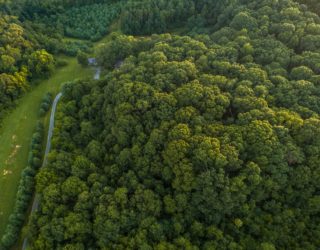“Fixing our broken housing market”, the government’s February 2017 white paper on housing, was published earlier this month and has received mixed reactions.
The good news is that we are now attempting to put in place better thought-out, more joined-up and better incentivised policies for getting the market moving. However, whilst the longer term drive for better informed strategic planning is admirable, the emphasis on government and local authorities to deliver it is questionable based on track record and available resources.
Perhaps more disappointing than the lack of robust delivery mechanisms is the lack of ambition in the overarching strategic aims. The focus on local planning by local planning authorities fails to afford the opportunities that regional strategies and the promotion of green infrastructure could bring.
The paper talks of more rigid protection for our green belt and the premise that “Green belt boundaries should be amended only in exceptional circumstances”.
Many have welcomed this, and undoubtedly the concept and function of our green belt land is massively important. We should absolutely resist ad-hoc development and the uncontrolled gradual erosion of green belt land, but sensible review is often overshadowed by the histrionics generated by this highly emotive issue. We need to understand the quality, accessibility and amenity value of our green belt land to be able to make a proper judgment of value, and this needs to be done at both regional and local scales.
Conversely, alongside this move to protect all green belt land (regardless of value) will be the ‘presumption that brownfield land is suitable for housing unless demonstrated otherwise’. It is a good move to try and free up smaller scale sites for SME developers, but the default position for allocating it to housing is short sighted. We should be evaluating needs locally and identifying opportunities to fill those needs, be it parks, flood alleviation, play provision, schools or housing.
The new approaches for speeding up the process seem sound in principle, and getting development moving faster is essential. However, the proposed changes to great crested newt licensing raise significant concerns. There are big questions marks over the resources and skills available for Natural England and local authorities to deliver this. The risk is that the restrictions are removed from developers without appropriate alternative habitat in place. This needs to be part of a far more coordinated approach that draws upon appropriate skills and expertise from across the sectors and industry.
The biggest missed opportunity in the white paper is the role that green infrastructure can play in providing a framework for connected, multifunctioning and sustainable development.
The social, environmental, economical, hydrological and ecological benefits of green infrastructure are well documented. Yet we still await any meaningful policies to promote and integrate it into the system and, for me, this is the ideal opportunity.
What is required is a holistic review of need and opportunity across the board, with the emphasis on creating flexible and sustainable communities that can accommodate our growing population whilst conserving and enhancing our natural and cultural assets. We need to think creatively, spatially and
strategically – using sophisticated mapping and analysis tools to plan the best places for long term sustainable development and associated infrastructure with a platform that enables full participation. We have the skills and tools now to properly interrogate multiple layers of complex data and find solutions that work for the environment, communities and developers, but as long as we focus on one topic at a time we will never coordinate the big picture and build the communities that we all aspire to.
You can find out more about Thomson Ecology’s landscaping architecture team here.











